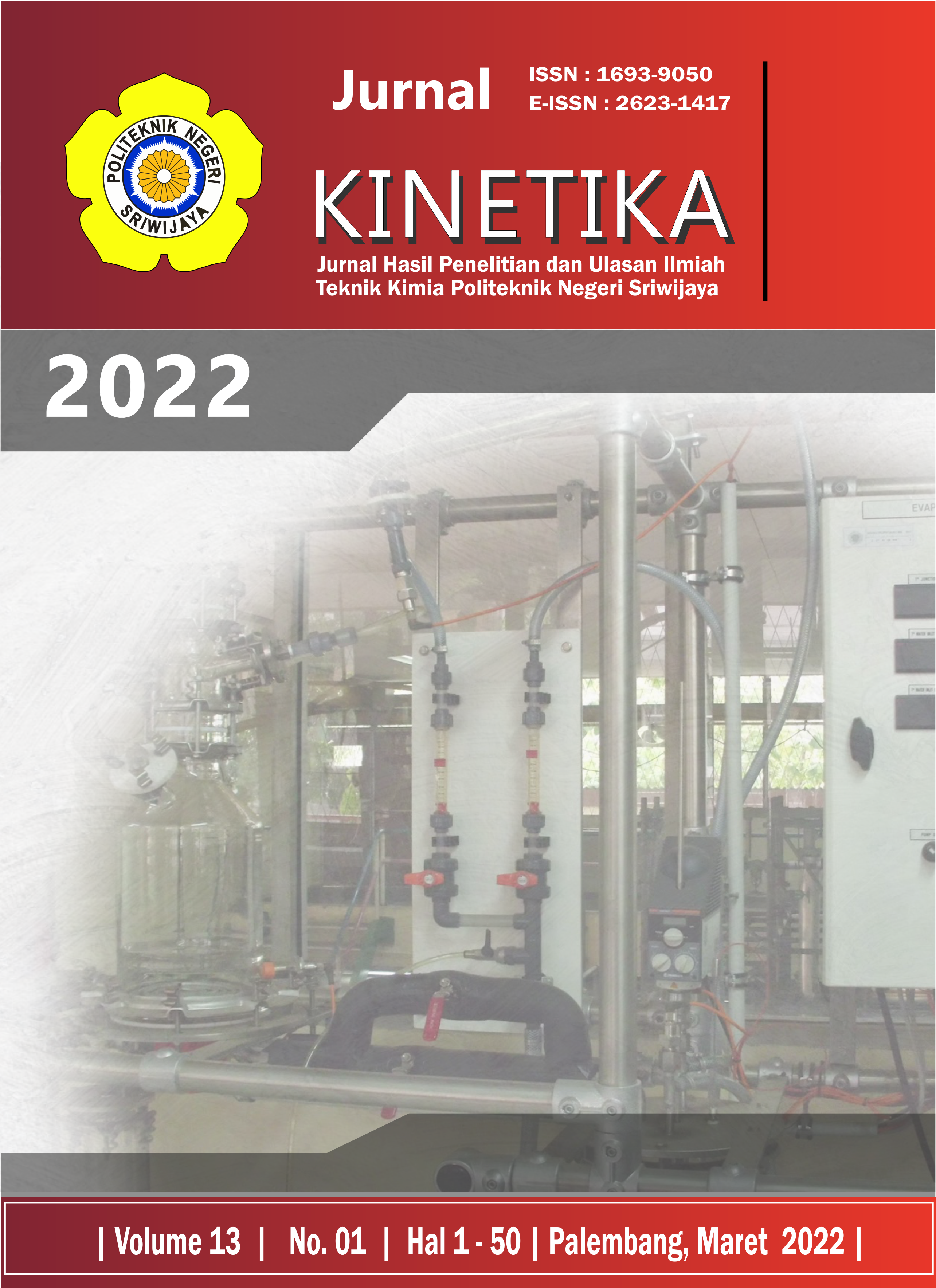THE EFFECT OF GLYCEROL CONCENTRATION ON PRODUCT DENSITY IN STEAM STRIPPING EQUIPMENT WITH RASCHING RING PACKING TYPE
THE EFFECT OF GLYCEROL CONCENTRATION ON PRODUCT DENSITY IN STEAM STRIPPING EQUIPMENT WITH RASCHING RING PACKING TYPE
Abstract
Stripper is a separation process between a mixture of two liquid phase substances by using a gas phase substance as a separator. In this case, glycerol and H2O are used as a mixture and steam is used as a separating agent with the aim of removing the H2O content contained in the glycerol. In the separation process, variable variations are used in the form of concentrations of glycerol and H2O, respectively, concentrations of 70 %, 80 %, and 90 % against a predetermined temperature and pressure of 140oC and 45 Psi, with the aim of knowing what the glycerol and H2O concentrations are in the separation process. can work optimally. The process that occurs is a separation process based on boiling point, where water which has a lower boiling point of 100oC will be separated from glycerol with the help of steam with a temperature of 140oC. At a variable concentration of 70 % glycerol feed with a predetermined temperature and pressure, the data obtained is that the product still contains 4 % water in the glycerol product, the results of the process still do not meet the desired product conditions, namely 99.5 %. On the other hand, with a variable concentration of 90 % glycerol, this product only contains 1 % H2O, it can be concluded that the concentration of feed glycerol on H2O is very influential in the process of eliminating H2O levels in glycerol, because the higher the concentration of glycerol on H2O the work of steam in binding H2O is lighter so that steam can strip the H2O content in the feed more maximally.


